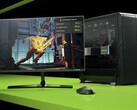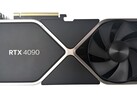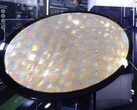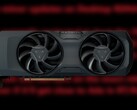CheckMag | Desktop GeForce RTX 5080 very likely to have a ~275 W TBP: Why this matters

With Nvidia ready to drop its GeForce RTX 4000 Super graphics cards into consumers' laps, and GeForce RTX 5000 cards supposedly arriving in late 2024 or early 2025, it's time to start making estimates of what the latter will be like in terms of specs and gaming performance. Turning to historical data will help us do just that, as an interesting trend is pretty much hiding in plain sight.
| Product | Typical power consumption, up to | CUDA core count |
|---|---|---|
| GeForce RTX 4080 (Desktop) | 320 W | 9728 cores |
| GeForce RTX 3080 (Desktop) | 320 W | 8704 cores |
| GeForce RTX 2080 (Desktop) | 225 W | 2944 cores |
| GeForce GTX 1080 (Desktop) | 180 W | 2560 cores |
| GeForce GTX 980 (Desktop) | 165 W | 2048 cores |
| GeForce GTX 780 (Desktop) | 250 W | 2304 cores |
| GeForce GTX 680 (Desktop) | 195 W | 1536 cores |
| GeForce GTX 580 (Desktop) | 244 W | 512 cores |
| GeForce GTX 480 (Desktop) | 250 W | 480 cores |
| GeForce GTX 280 (Desktop) | 236 W | 240 cores |
On average, vanilla "eighties" released in the last 15 years had a TBP/TDP (there is little difference between the two considering it's the graphics chip that consumes most of the power, not VRAM chips or anything else) of around 240 W, with some models going well below 200 W and most of them happy with something like 250 W. It's a different story for the RTX 3080 and the RTX 4080; with those two, Nvidia went out of its way to give AMD something to think about. This came at a cost as those graphics cards had both very high price tags and high power consumption figures.
Now, most if not all GeForce RTX 5000 cards will probably be powered by 3 nm chips; the RTX 4080 (Desktop) is powered by the 5 nm AD103 chip, for reference. The transition means Nvidia engineers will have a lot of choices to make. Clock speeds can be improved and power consumption will stay mostly the same. The architecture can be improved, making each computing block more complex and more powerful, and yet the die area will remain unchanged compared to previous-gen graphics chips. However, it's fair to say that in one respect, Nvidia has backed itself into a corner. The TBP figures of the current GeForce RTX lineup are way too high and jacking them up further makes no sense. On the opposite, it makes sense to dial the figures down to compete with AMD both on the sheer power front and on the power efficiency front, as well as to make the new cards attractive to owners of smaller PC cases.
What that means is, the GeForce RTX 5080 is very likely to have a lower TBP than what the RTX 4080 has, with a value between 250 W and 300 W looking like a safe bet. (It won't go any lower than that because this would make the fancy new power connectors pointless.) In turn, the TBP reduction makes a significant increase in CUDA core counts rather unlikely. A modest increase of 10% or 20% is possible; actually, a decrease is possible as well, much like the GTX 980 had fewer CUDA cores than the GTX 780 did. Instead, performance improvements will mostly come via architectural improvements and quite possibly clock speeds increases.
Performance-wise, a ground-breaking (say, 70% or even 50%) gen-to-gen increase is unlikely even if the TBP goes down by just 20 W. Still, 20% or 30% will be nothing to sneeze at, either. As long as that does not get accompanied by a price increase, that is. For many gamers, the RTX 4080 is simply out of reach and so if the RTX 5080 comes out costing even a hundred dollars more while delivering 30% higher fps, it will technically be about as unaffordable as the RTX 4080 was even if its price-to-performance ratio is better. Therefore, it makes sense to expect the new card to cost the same as the RTX 4080, or perhaps even slightly less than that.
Make sure to put plenty of salt into this pan, as it's pure speculation at this point (although one based on historical data - and kind of keeping in line with the latest rumors).
Source(s)
Image credit: Viva Luna Studios on Unsplash










